
Samsung Electronics Co Ltd
KRX:005930

Samsung Electronics Co Ltd
Samsung Electronics Co. Ltd. is a titan in the global technology arena, with its roots stemming deep into South Korea's advancing industrial landscape. Established in 1969, it has meticulously expanded its reach and influence across various sectors of the tech world. The company is structured around three major segments: Consumer Electronics, IT & Mobile Communications, and Device Solutions, all of which play critical roles in the firm's profitability and growth trajectory. In Consumer Electronics, Samsung has become synonymous with high-quality, innovative products like televisions and home appliances, capitalizing on its reputation for pushing the boundaries of design and functionality. The IT & Mobile Communications segment, powered by the ubiquitous Samsung Galaxy line of smartphones and tablets, has firmly positioned the company as a formidable player in the fast-paced mobile technology market, frequently competing head-to-head with industry giants such as Apple.
On the back end, Samsung's Device Solutions segment is the unsung hero driving revenues, largely through semiconductor production. Samsung is one of the world's leading producers of memory chips and displays, supplying these critical components not only for its own devices but also to a vast array of other tech companies, including competitors. This strategic vertical integration allows Samsung to benefit from economies of scale and exert substantial influence over the supply chain, bolstering its competitive edge. Together, these segments enable Samsung Electronics to maintain a robust presence on the global stage, continuously fueling its growth engine through innovation, strategic partnerships, and foresight into technological advancements.
Earnings Calls
In Q4 2024, Samsung faced a 4% revenue decline to KRW 75.8 trillion amid global uncertainties, although annual revenue reached KRW 300.9 trillion. The Mobile eXperience division anticipates growth through the Galaxy S25, expecting double-digit increases in flagship sales, despite quarter-on-quarter demand declines. They focus on AI functionalities to enhance product competitiveness. Samsung projects overall smartphone market growth in 2025, focusing on advanced AI capabilities and product innovation. Operating margins are targeted to remain double-digit, but material costs may rise. The company plans substantial capital expenditures, with KRW 10 trillion allocated for share buybacks to boost shareholder value【4:12†source】.
Management
Jong-Hee Han is a prominent executive at Samsung Electronics, where he has played a significant role in the company's growth and innovation, particularly in the visual display business. He has served as the Head of the Visual Display Business and was appointed as the Vice Chairman and CEO of Samsung Electronics. With a strong background in engineering, Jong-Hee Han has been instrumental in advancing Samsung's display technology, overseeing the development of notable products such as QLED televisions and other cutting-edge display solutions. Under his leadership, Samsung has maintained its position as a leader in the global TV market. Jong-Hee Han is known for his strategic vision and commitment to enhancing user experiences through innovative consumer electronics products. His leadership style emphasizes research and development, ensuring that Samsung remains at the forefront of technology in the highly competitive electronics industry.
Tae-Moon Roh is a prominent executive at Samsung Electronics Co. Ltd., currently serving as the President and Head of the Mobile Communications Business. He is often recognized for his deep expertise in engineering and his pivotal role in driving innovation within the company's mobile division. Having joined Samsung in 1997, Mr. Roh has climbed through the ranks by contributing significantly to the development and success of Samsung's flagship Galaxy smartphones. With a strong background in research and development, Mr. Roh has been instrumental in integrating cutting-edge technologies into Samsung's mobile products, enhancing user experiences, and maintaining the company’s competitive edge in the global market. Under his leadership, Samsung continues to focus on advancing 5G technology, foldable smartphones, and other innovations. He is known for his strategic vision and dedication to adapting to changing consumer needs, further solidifying Samsung's position as a leader in the mobile industry.
Hark-Kyu Park is a prominent figure at Samsung Electronics Co., Ltd., where he holds a significant leadership position. He is the Executive Vice President and Chief Financial Officer (CFO) of the company. Hark-Kyu Park has been with Samsung Electronics for several years, during which he has played a vital role in shaping the company’s financial strategy and ensuring its fiscal stability. As CFO, Park is responsible for overseeing Samsung's financial operations, including financial planning, risk management, and capital allocation. His leadership is crucial in maintaining the company's financial health and achieving its long-term financial goals. Park's extensive experience in finance and management has been instrumental in navigating Samsung through various market challenges and opportunities. Throughout his career at Samsung, Park has been recognized for his strategic insight and ability to adapt to the rapidly changing technology industry. His contributions have been vital in securing Samsung’s position as a global leader in electronics, particularly in the areas of innovation and market expansion.
Jung-Bae Lee is a prominent executive at Samsung Electronics Co., Ltd., serving as the President and Head of the Memory Business, a division that is critical to Samsung's operations given its status as one of the largest producers of memory chips in the world. With a career spanning several decades at Samsung, Lee has been integral in driving technological innovation and expanding the company's leadership in the global semiconductor market. Under his leadership, Samsung's Memory Business has continued to advance its technology, focusing on high-capacity and high-performance memory solutions that cater to a wide range of applications, from consumer electronics to data centers. Lee has emphasized the importance of investing in R&D to maintain Samsung’s competitive edge and to meet the increasing demand for data processing and storage solutions driven by the growth of AI, 5G, and other emerging technologies.
Mr. Hyun-Chong Kim is a prominent figure in the corporate and governmental sectors of South Korea. He serves as the President and Chief Compliance Officer at Samsung Electronics Co., Ltd. In this role, he is responsible for overseeing the compliance framework and ensuring that the company adheres to legal, regulatory, and ethical standards across its global operations. His role is critical in maintaining the integrity and reputation of Samsung Electronics, a leading multinational conglomerate in the technology industry. Before joining Samsung, Kim had a distinguished career in the South Korean government and legal sectors. He has served as the South Korean Ambassador to the United Nations and held the position of Minister for Trade in South Korea. During his tenure as Minister, he played a significant role in the negotiation of free trade agreements and shaped trade policies that helped enhance South Korea's global trade presence. Mr. Kim holds a strong academic background, with degrees from highly respected institutions, which have contributed to his expertise in international trade law and policy. His transition from public service to a pivotal role in the private sector at Samsung signifies his versatility and extensive understanding of both global politics and corporate governance.
Kyungwhoon Cheun is a prominent executive at Samsung Electronics Co., Ltd. He is known for his substantial contributions to the company's advancement in telecommunications technology, particularly in the areas of 5G networks and related innovations. Cheun holds the position of President and Head of Samsung's Networks Business, where he is responsible for overseeing the development and implementation of cutting-edge network solutions. Under his leadership, Samsung has expanded its influence in the global telecommunications industry, focusing on the development and deployment of 5G technology. Cheun's expertise in the field is supported by an extensive background in research and development within Samsung, where he has contributed to the company's strategic direction in telecommunications. Kyungwhoon Cheun has been instrumental in steering Samsung's efforts to collaborate with global partners and carriers to expand the reach and capabilities of 5G networks worldwide. His role involves not just technological innovation but also strategic business development to ensure that Samsung remains a key player in the rapidly evolving telecommunications landscape. Cheun's contributions to Samsung and the broader telecommunications industry highlight his role as a forward-thinking leader focused on innovation, collaboration, and the practical deployment of next-generation network solutions.
Robert M. Yi served as the Senior Vice President and Head of Investor Relations at Samsung Electronics Co. Ltd. In this role, he was responsible for managing the company's communication with the investor community, including disseminating financial information and ensuring transparency in the company’s operations. Yi played a crucial part in articulating Samsung’s financial strategies and business initiatives to investors, analysts, and stakeholders, thereby helping to shape the company's global financial image. His expertise contributed significantly to building trust and maintaining strong relationships with the global investment community. Prior to assuming this position, Yi had a diverse background that combined both technical and managerial experiences, which gave him valuable insights into the technological and business aspects of the electronics industry.
Jung-ho Park is a prominent executive in the technology industry, currently serving as an influential leader at Samsung Electronics Co., Ltd. With a deep understanding of cutting-edge technology, Park has played a crucial role at Samsung, contributing to the company's growth and innovation strategies. In his various roles at Samsung, Jung-ho Park has focused on advancing the company's objectives in areas such as mobile technology, semiconductors, and consumer electronics. His leadership style typically emphasizes innovation, operational efficiency, and the development of sustainable business practices that align with global market trends. Throughout his tenure, Park has been involved in driving key projects and initiatives that enhance Samsung's competitive edge in the rapidly evolving technology sector. His efforts have been instrumental in maintaining Samsung's position as a leader in innovation and as a major player in the global electronics market. Park’s contributions extend beyond technical advancements; he is also committed to fostering a dynamic corporate culture that encourages agility, creativity, and strategic foresight. Overall, Jung-ho Park is regarded as a vital asset to Samsung Electronics, helping to position it for continued success in the future.
Jung-Suk Kim is a well-regarded executive at Samsung Electronics Co., Ltd. He has made significant contributions to the company’s strategic initiatives and operations. Kim has extensive experience in the electronics and technology industries, bringing deep expertise in business management and innovation. At Samsung, he has been involved in steering projects that align with the company's vision of technological advancement and global market leadership. Throughout his career, Kim has demonstrated strong leadership skills and a keen understanding of market trends, which have been instrumental in driving Samsung’s success in a competitive industry. His role often involves collaboration across different departments to ensure efficiency and to maintain Samsung's reputation as a leader in technology solutions. Jung-Suk Kim's influence extends beyond operational duties; he often represents Samsung at international forums and contributes to corporate responsibility practices. His work helps in maintaining Samsung's competitive edge through strategic planning and execution.
S. P. Kim, also known as Sang-Pil Kim, is a notable executive within Samsung Electronics Co., Ltd. He has held various key roles and contributed significantly to the company's global operations and strategies. His expertise encompasses marketing, product development, and international business. Over the years, S. P. Kim has been involved in expanding Samsung's market presence and enhancing the brand's competitiveness in the technology sector. Through his leadership, he has played a pivotal role in aligning Samsung's innovative capabilities with consumer demands, further solidifying its position as a leader in the electronics industry.



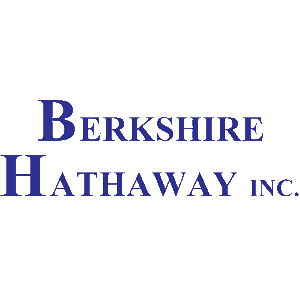


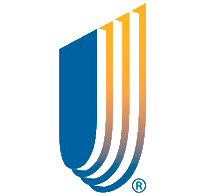
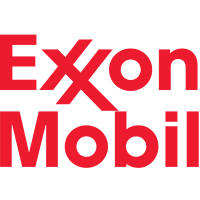
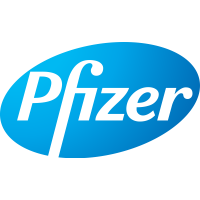




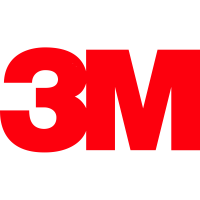




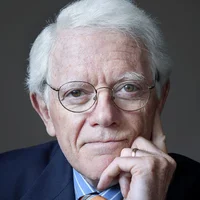

































 You don't have any saved screeners yet
You don't have any saved screeners yet
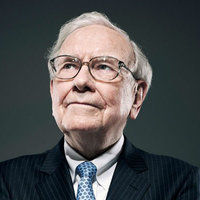
Hello, everyone, and welcome to the Samsung Electronics 2024 Fourth Quarter Financial Results Conference Call. I will be your coordinator. [Operator Instructions] As a reminder, this call is being recorded.
I would now like to turn the conference over to the Investor Relations team. Please go ahead.
Thank you, coordinator. Good day to everyone tuning in from around the globe, and thank you for joining Samsung Electronics' earnings call for the fourth quarter of 2024. I am Daniel Oh, Head of Investor Relations.
Before we begin, I would like to inform you that quarterly results and supplementary materials to our earnings call are available on Samsung Electronics' Investor Relations website at www.samsung.com/global/ir. A webcast of today's call will also be uploaded to the website after the session.
Following is our legal disclaimer for today's call. I want to remind you that some of the statements we will be making during today's call are forward-looking based on the environment we currently see. They are subject to certain risks and uncertainties that may cause our actual outcomes to differ materially from those expressed in today's discussion. The information we are giving you on this call this morning is as of today's date.
For today's conference call, we'll begin with the 2024 fourth quarter results and our outlook, followed by updates on capital expenditures, shareholder returns and ESG. Executives from each business unit will subsequently provide updates on their respective businesses, and then we'll open the Q&A session.
Now for the executives joining us on the call, I'm pleased to introduce EVP Soon-cheol Park, the Head of Corporate Management Office and our new CFO, who is here today to discuss our financial results. And from the business unit, EVP Jaejune Kim, representing Memory; rejoining the call, VP Hyeok-man Kwon for System LSI; joining the call for the first time, VP Mijung Noh for Foundry; returning to the call, EVP Charles Hur for Samsung Display Corp; VP Daniel Araujo for the Mobile eXperience business; and finally, EVP KL Roh, who recently got promoted for Visual Display.
Now I will pass the conference over to our CFO, Soon-cheol Park.
Thank you, Daniel, and good morning. It's an honor to communicate with our shareholders as the new CFO. The management team, including myself and all the employees at Samsung Electronics, are very aware of the challenges the company is facing, and we are fully committed to overcoming the current difficulties.
Samsung's business portfolio spans a diverse range of industries that operate within different business cycles and market dynamics, which cause fluctuations in our company's performance, and we are confident that this diversity, along with the progress being made in our businesses, will drive gradual recovery.
In the past, Samsung has often relied on its core strengths and capabilities to overcome hardship and achieve sustained growth. We firmly believe that the current challenges can be resolved swiftly. And by overcoming these challenges, Samsung can enter a new phase of growth.
To our shareholders, I ask for your trust and support in our efforts. And as the CFO, I am committed to enhancing communication with our investors and working to further reinforce your trust in Samsung Electronics.
Now I am going to review the consolidated financial performance for the fourth quarter of 2024.
The company's revenue declined 4% quarter-on-quarter to KRW 75.8 trillion. In the DS division, revenue increased by 3% led by increased sales of high value-added memory products for server. In the DX division, revenue decreased by 10%, mainly due to rising competition and fading launch effect of new smartphone models. At the company level, annual revenue reached KRW 300.9 trillion, our second highest total ever, surpassed only in 2022.
SG&A expenses increased to KRW 22 trillion up by KRW 1.2 trillion quarter-on-quarter, reflecting our continued commitment to secure future tech leadership through R&D. SG&A expenses as a percentage of sales also increased, rising 2.7 percentage points to 29.1%.
Operating profit was KRW 6.5 trillion, down KRW 2.7 trillion quarter-on-quarter due to soft market conditions, especially for IT products and the increase in expenditures, including R&D. Operating margin decreased 3 percentage points to 8.6%.
Regarding currency movement versus the Korean won, effect of the strong U.S. dollar were offset by relative weakness in other currencies, resulting in slightly positive impact of roughly KRW 0.7 trillion company-wide.
Now I'd like to discuss our outlook for 2025. In the first quarter, improvement in the company's overall performance are likely to be limited by ongoing weakness in our semiconductor business. However, we will push growth by increasing sales of smartphones offering, differentiated AI experience in premium segment across the DX product lineup. In the DS division, memory will accelerate tech migration to address the demand for high value-added products.
Following recent weak performance, the systems semiconductor business will improve its effort to supply flagship products slated to launch in the second half, identify opportunities to win orders in emerging application areas and advance the maturity of the 2-nano process. For display, our outlook remains conservative with the weakness in the overall market demand for smartphones expected to carry over from the fourth quarter.
For the DX division, our strategy to improve our performance centers on driving sales growth of Galaxy S25 and at premium AI-enhanced products across our lineup. Looking at 2025 as a whole, we aim to enhance our technology and product advantages in the AI market, advanced efforts to meet further demand for high value-added products and drive growth in premium segment.
In the DS division, we anticipate that market conditions will remain softer in the first half. Within this environment, we'll focus on securing our tech leadership for mid- to long-term growth and developing our portfolio of high-density, high-performance products. In addition, we aim to improve SoC capabilities and fully address the demand for ultra-high resolution image sensors.
In Foundry, we are focused on securing orders from major customers while improving profitability in mature process technologies.
For display, we will strengthen our leadership position in high-end products by enhancing and leveraging the advantages of our product. Furthermore, we remain committed to diversifying our portfolio by accelerating our expansion in the IT and automotive sectors.
For the DX division, our strategy will focus on expanding our leadership in AI and continuing to deliver innovations and new experience in premium segment, all while reinforcing value across our product portfolio.
Now on to the capital expenditures. CapEx in the fourth quarter of 2024 increased by KRW 5.4 trillion to KRW 17.8 trillion quarter-over-quarter, of which KRW 15 trillion was invested in DX division and KRW 1 trillion in Display. Annual CapEx for 2024 remained relatively steady at KRW 53.6 trillion, up slightly from KRW 53.1 trillion in 2023. Of the 2024 total, KRW 46.3 trillion was invested in DX and KRW 4.8 trillion in display.
In memory, we increased our investments both on a quarter-on-quarter and full year basis with our continued focus on securing further tech leadership through R&D and expanding capacity for advanced products such as HBM. In foundry, however, we reduced the total annual CapEx to account for difficult market conditions. Meanwhile, in display, we increased our annual investment, maintaining our commitment to bolstering our technology edge, especially in small to medium-sized panels.
For 2025, our capacity investment plans are still in development. But in a general sense, we expect the yearly memory investment to remain at a similar level.
With that, I will turn the call back over to Daniel. Thank you.
Thank you, CFO Park. Let's move on to shareholder returns.
The Board of Directors today approved a quarterly per share dividend of KRW 363 for common stock and KRW 364 for preferred stock. Under our 3-year shareholder return policy for 2024 to 2026, we committed to an annual dividend of KRW 9.8 trillion with a KRW 2.45 trillion payout for the fourth quarter scheduled for mid-April. With the 2024 results concluded, the company's free cash flow was KRW 19.9 trillion and the shareholder return, which is 50% of free cash flow, stands at approximately KRW 9.9 trillion. Considering our regular annual dividends of KRW 9.8 trillion, there was no meaningful surplus in 2024 for any early returns.
In November 2024, the company announced a share repurchase program valued at KRW 10 trillion to enhance shareholder value. Of this amount, we have started the repurchase and cancellation of KRW 3 trillion worth of shares over a 3-month period from the time of the announcement. Of the KRW 3 trillion worth of shares, we had achieved 89.3% of the purchase of the common and preferred shares proportionately as of January '24.
Now I want to share some of our achievements in sustainability management. On January 23, our local time here in Korea, the company unveiled the Galaxy S25 Series at Galaxy Unpacked 2025 in San Jose, California. The S25 marks another step forward in our sustainability journey, utilizing cobalt extracted from the used batteries from Galaxy smartphones and recovered from the battery production process, establishing a more circular system for our batteries. Furthermore, S25 incorporates recycled plastics sourced from waste wafer trades from our semiconductor manufacturer. Also, through the launch of our new Galaxy trade-in program, we aim to not only preserve the long-term market value of Galaxy smartphones, but also contribute to circular economy by facilitating more resales of our devices. Our sustainability efforts continue to gain momentum as we innovate and shape a better future.
Now the representatives from each business segment will present more detailed information on the fourth quarter of 2024 performance and business outlook. EVP Jaejune Kim from the Memory business will get us started.
Good morning. This is Jaejune Kim from Memory Global Sales and Marketing.
In the memory market in the fourth quarter, the scale of inventory adjustment by mobile and PC customers was larger than initial expectations. For server applications, as major data center and tech companies continue to invest in AI, demand focusing on HBM and server DRAM remains strong, but the server SSD demand was relatively impacted by the delay of some data center customers' projects. In this situation, we expanded sales mainly focusing on HBM and high-density DDR5 for servers where demand momentum exists. As a result, DRAM ASP per gigabit increased compared to the previous quarter. Moreover, thanks to DRAM ASP increase, we achieved a record-high fourth quarter revenue.
However, as some data center projects were delayed, server SSD shipments were limited compared to the initial expectations. Moreover, with the additional impacts of weak mobile and PC demand, bit growth for both DRAM and NAND came in under guidance. In addition, in terms of profitability, operating profit decreased slightly compared to the previous quarter due to the increases in both R&D expenses to secure future technology leadership and initial ramp-up cost to expand production capacity for cutting-edge nodes.
Now let's move on to the outlook for the first quarter. For mobile and PC applications, we expect that customers will continue to lower down their inventory level until the first quarter. In server, we expect AI demand to continue its momentum. However, we expect there will be changes in DRAM and SSD demand of data center and OEM customers depending on the GPU supply situation. On top of that, due to export control on AI chips, the volatility of HBM demand will be unexpectedly high.
As the uncertainties in demand continue, we are continuing to shift our business portfolio, focusing on high value-added products. To achieve this, we are optimizing the line operations for some legacy nodes while accelerating the migration to cutting-edge nodes to respond to the demand for high-performance and high-density products. For DRAM, we are expanding the shipment portion of DDR5 and LPDDR5X by accelerating a transition to 1b nano. For NAND, we are excluding the tech migration from V6 to V8 while increasing V7 QLC-based server SSD sales.
Lastly, let me talk about the outlook for 2025. AI investments are projected to continue across the industry in 2025, and we observed that inventory adjustment by mobile and PC customers are now progressing faster than our market expectation. Thus, we expect memory demand to start to recover from the second quarter. For NAND, in particular, given the industry's conservative CapEx deployment over the past 3 years and the recent industry trend towards production cuts, we expect that there will be an impact on supply and demand from the early stage of second half in this year at the latest. Under this situation, we are reducing the portion of legacy DRAM and NAND products to align with market demand and accelerating the migration to cutting-edge nodes. We will optimize our business portfolio by increasing the portion of high value-added products such as HBM, DDR5, LPDDR5X, GDDR7 and server SSDs based on cutting-edge nodes. Through this, we will continue to strengthen our business competitiveness. Thank you.
Good morning. This is Hyeok-man Kwon from the System LSI business.
During the fourth quarter, under the rate cut cycle and heightened geopolitical uncertainties, our earnings declined due to demand weakness in the mobile market as well as increased R&D expense to advance new, cutting-edge product development. However, as a technological achievement, our Exynos W1000 wearable processor, currently in mass production using a 3-nanometer process, won an innovation award at CES 2025.
In the first quarter, we anticipate rising demand for core products such as image sensors and DDI driven by flagship smartphone launches. Yet the overall earnings downturn is expected to persist for the time being due to the delayed entry into the flagship SoC market. Looking ahead, we are focused on further enhancing our flagship SoC, the Exynos 2500, through product optimization and close collaboration with our Foundry business, aiming to secure design wins for our flagship mobile models scheduled for release in the second half. For sensors, we expect to win contract for the world's first 0.5 micrometer pixel 200-megapixel project.
In 2025, following the inauguration of the Trump administration's second term, shifting policies and fluctuations in interest rate and inflation are expected to create a range of uncertainties and weigh on consumer sentiment. As a result, growth in the mobile market area closely tied to our earnings may slow somewhat. Nonetheless, market expectations for our device AI remains strong and demand in the premium smartphone segment is projected to persist. We intend to develop our flagship SoC in a timely manner with the required performance level to secure additional demand by entering major customers' new flagship models. For sensors, we will proactively respond to high resolution needs such as 200-megapixel telephoto and cameras and expand into diverse applications, including automotive and XR. For DDIs, we will continue to improve our solution competitiveness in touch and T-Con to maintain our market leadership. Thank you.
Hello, everyone. This is Mijung Noh from the Foundry business.
In the fourth quarter, the market showed solid growth in advanced node driven by steady demand for AI and HPC applications. Even though the demand for mobile and the other major application remained relatively weak, our sales resulted in a slight increase due to a few U.S. customers' strong demand. However, our profit declined due to lower utilization rates and higher R&D expenses of advanced technology.
Our 2-nanometer GAA technology is under active development with design kit already distributed to customers for product design. Meanwhile, the 4-nanometer technology is in mass production for HPC product based on the stable yield. We continue to reinforce our competitiveness across overall process technologies and design infrastructure to expand into a wider range of applications, including mobile and HPC, and to broaden our customer bases.
Looking ahead to the first quarter, the foundry market is expected to contract quarter-over-quarter due to seasonality. Our earnings are also expected to remain weak due to sluggish mobile demand and higher fixed cost burden stemming from lower utilization. We will concentrate on advancing leading-edge process development and enhancing process maturity to drive expanded opportunity in AI and HPC applications and advanced node engagement.
Turning to the 2025 outlook. While mobile and PC demand may remain soft due to ongoing macroeconomic uncertainties, the AI and HPC sector is expected to stay strong. Against this backdrop, advanced technology below 5-nanometer are projected to maintain double-digit growth. We expect a slower-than-anticipated recovery in demand for some of our major customers, which could limit our earnings improvement in the first half. Nonetheless, we plan to achieve year-over-year revenue growth by progressively increasing the portion of our sales from advanced technology backed by robust AI and HPC demand. In particular, we will try to secure orders to major customers by ramping and stabilizing our 2-nanometer GAA technology in 2025, while simultaneously bolstering our 4-nanometer technology and design infrastructure to meet the growing needs of mobile HPC. In the mature technology, we will pursue the commercialization of specialty technologies such as EM NAND, millimeter wave and RF to diversify applications and further strengthen our competitiveness. Thank you.
Good morning. This is Charles Hur from the Corporate Strategy team at Samsung Display. I will brief you on our results for the fourth quarter of 2024.
For the mobile display business, profits have declined quarter-on-quarter due to sluggish smartphone demand and rising competition. However, IT and auto segment achieved sequential sales growth in double digits. This was a result of our consistent efforts to diversify our business portfolio. For the large display business, we have achieved double-digit growth in revenue compared to the previous quarter with an increase in TV sales, thanks to year-end seasonal demand. Overall, the business results improved slightly on the back of higher productivity and utilization.
Next, I will share our outlook and strategies for the first quarter of 2025. For the mobile display business, our performance outlook is quite conservative considering overall soft demand in smartphone and IT market. However, we will strive to expand our sales by actively addressing demand for the major customers' new products. For the large display business, we are scheduled to launch QD-OLED TV with improved brightness as well as monitors with high resolution. We will seek to increase our sales volume promptly by fulfilling customer demand.
Next, I will share our outlook and strategies for the mobile display business in 2025. Ongoing uncertainties and delayed economic recoveries may slow down the growth of the smartphone market. However, we expect OLED adoption in smartphones to keep rising. Against the competition among panel makers in the smartphone market, we will strengthen our product competitiveness with low power consumption and differentiated design lineups to maintain our leadership in high-end segment. For IT and auto application, we'll also accelerate OLED penetration by entering the volume segment, which will diversify our business portfolio. In addition, as planned, we have been preparing 8.6-generation IT OLED production line to secure a competitive advantage in the growing IT OLED market.
Finally, for the large display business in 2025, for TV, we will solidify our premium position in most of our customers by delivering superior features such as improved brightness. And for monitors, we will continue to capture demand in gaming market with the launch of 160 ppi UHD product and 500-hertz refresh rate QHD model. Also, we'll continue to broaden our product lineups and customer bases to enter the B2C market in 2025. Thank you.
Hi, everyone. This is Daniel Araujo from the MX division. I'd like to share our Q4 2024 results and outlook for this year.
Despite ongoing inflation and global political unrest, the smartphone market experienced modest growth in Q4 led by the premium segment. The MX division's Q4 smartphone and tablet shipments were 52 million units and 7 million units, respectively, and the smartphone ASP was $260. For the MX business, sales and profit decreased quarter-to-quarter due to a reduction in smartphone sales, including fading effects of new flagship models. However, flagship sales saw robust growth on a full year basis led by double-digit growth of S24 featuring Galaxy AI. Tablet and wearable products also grew in both value and shipments.
Moving on to our outlook for Q1 2025. Overall smartphone demand will decrease quarter-on-quarter due to seasonality trends. The MX business expects to see an increase in smartphone shipments and ASP due to the launch of new models, while tablet shipments should stay similar sequentially. We plan to drive sales growth focused on flagship models with the newly launched Galaxy S25. We will actively promote new AI experiences and enhance competitiveness of our products while strengthening collaboration with partners to continue leading the AI smartphone market. Still, as the risk of rising costs for key components is expected to persist, we will strive to expand the flagship-centric sales by advancing Galaxy AI capabilities while continuing to realize operational efficiencies in order to secure a double-digit operating margin.
Looking ahead to 2025, despite continued uncertainty in the macro economy, the smartphone market is expected to grow slightly year-on-year driven by increased expectations for AI products. In particular, the mass market segment is expected to grow given the rollout of AI functionality to midrange products, along with overall improvements in hardware performance. The growth rate of the premium segment is expected to slow down slightly compared to the previous year. The tablet market is anticipated to grow in both value and shipments due to demand from the product replacement cycle and the expansion of AI features across tablet products. The smartwatch and TWS markets are also forecast to grow as AI functionality expands and the market demand for premium products increases.
The MX division will reinforce our leadership in mobile AI through the launch of the S25 Series. The S25 provides an enriched and personalized AI experience built on our One UI 7.0 AI integrated platform, which offers differentiated AI functionality such as multimodal interaction. Especially, we aim to drive sales growth by effectively communicating our highest performance devices ever with the S25 and the advanced Galaxy AI experience via innovative marketing and sales strategies. For foldable devices, we plan to significantly enhance product competitiveness, focusing on their portability and performance. We will optimize the AI experience of S25 for the foldable form factors as well as strengthen our lineup to generate new foldable device demand and expand our customer base. In tablets and note PCs, we will provide further advanced Galaxy AI features and expand sales centered on premium products.
For wearables, we are striving to create products and experiences with unrivaled quality while driving sales growth by enhancing product differentiation and usability. In particular, for smartwatches, we will emphasize the health experience to further strengthen our presence in the premium market segment. For TWS, we are strengthening our lineup with specialized AI functionality and enhancing the sound quality in order to expand sales in the premium segment. Regarding XR, having now showcased the device during our Unpacked event, we are preparing to deliver an enriched customer experience across the expanded Galaxy ecosystem, which includes our new XR platform.
In 2025, we anticipate increases in the prices of major materials due to spec improvements in line with increasingly advanced products. Even with this backdrop, we will strive to improve profitability by continuing to enhance Galaxy AI and expand sales centered on flagship products. Thank you.
Hello, everyone. I'm KL Roh from the sales and marketing team of Visual Display. Let me brief you on the market condition and our results in the fourth quarter of 2024.
TV market demand increased quarter-on-quarter due to year-end seasonality and demand increased slightly year-on-year, mainly centering around entry-level product. For Samsung, we expanded sales and improved our sales mix through proactively addressing regional peak season promotion with a focus on high value-added products such as Neo QLED OLED and our 75-inch. Even so, our profitability decreased slightly due to stagnant TV market demand and the increased cost driven by intensified competition.
Now let me go over the outlook for the first quarter and 2025. In the first quarter, TV market demand is expected to remain stagnant year-on-year as demand decreased after the year-end peak season and uncertainties grew both internally and externally. However, demand for high value-added products such as Super Big TV, QLED and OLED model will stay solid. With Vision AI, which is the direction our AI screen should move forward, we will amplify the marketing buzz around newly launched model and take a more proactive approach to promoting our differentiated product and service experience. By doing so, we aim to enhance profitability through expanded sales of premium strategic products. The TV market in 2025 is projected to grow slightly, thanks to continued growth of high value-added products such as QLED and OLED TV and a demand recovery in the second half in major emerging markets.
For Samsung, we will integrate AI in all connected device experience based on SmartThings, on the Home AI vision business for hyper-personalized consumer experience. At the same time, we will extend our lead in the AI screen market by expanding adoption of security technology based on Samsung Knox, our in-house security solution.
In terms of product, we will expand our lineup and sales region from premium to entry-level product to target diverse regional demand. In particular, we will strengthen the sales of Super Big TV above 9 inches and expand differentiation of lifestyle screen to solidify our position as a global leader in the TV market. Finally, we will continue to strengthen new growth engine and enhance profitability by driving growth in service business such as TV Plus and App Store. Thank you.
And that concludes our prepared statements for the fourth quarter of 2024. Let's open the line for the Q&A session, which will be held in Korean. Our CFO, Soon-Cheol Park, will answer questions about the company as a whole, while the other representatives will answer any questions concerning their respective businesses.
[Interpreted] [Operator Instructions] The first question will be by Kim Dongwon with KB Securities.
[Interpreted] I have one question on the company overall and one on memory. First, it's about shareholder return. On November 2024, Samsung said it will repurchase KRW 10 trillion worth of shares over the next 12 months. Can you share details on the execution plan for the remaining KRW 7 trillion? Is the KRW 10 trillion part of the current return policy? Can you also update us on the value program? The second question is on memory. Could you provide more details on DRAM and NAND bit growth, ASP and operating profit?
[Interpreted] Here is the answer for your first question. We have always prioritized shareholder value. In early 2024, we announced a 3-year plan to return 50% of the period free cash flow. Given the concerns about our significant undervaluation, management and the Board decided to initiate a share repurchase program. We plan to repurchase KRW 10 trillion worth of shares over 12 months, starting with buybacks and cancellations worth KRW 3 trillion. For the remaining KRW 7 trillion, details such as the timing method and whether it will be a part of 50% free cash flow are under review, and we will share more details soon when they are concrete. Also, we are fully aware of the strong shareholder interest in value program plans. The key goal of the value program is to continually enhance the shareholder value. And our recently announced repurchase plan underscores our commitment to enhancing shareholder as well as company value. In 2025, business conditions are expected to remain uncertain. However, we are committed to sharing detailed plans within the shortest possible time line, including ways to improve our company's growth and profitability. Thank you.
[Interpreted] Yes. Let me take your question on the memory business performance. In the fourth quarter, the memory market saw more significant inventory adjustments by mobile and PC clients than expected, which deepened already weak demand. Demand for server DRAM was relatively solid, although for eSSDs, because large-scale data centers, excluding hyperscalers, experienced project delays, this resulted in a more limited demand than expected. Given these market conditions in Q4, DRAM bit growth was down by low-teens percentage Q-on-Q, NAND bit growth down by low-single percentage. DRAM ASP rose by around 20% Q-on-Q. Although following on the third quarter, we continue to drive sales of aging stock to normalize inventory back to more sound levels, which limited the rise in ASP. Overall, high value-added products increased as a share of total sales with HBM sales increasing by 1.9x, sales of 128 gigabyte or higher DDR5 modules increasing by 2.5x. As a result, we did see a substantial increase in ASP versus the third quarter.
For NAND, overall, we saw weak demand for mobile and PC applications, coupled with deferred demand for higher-priced server SSDs, which resulted in a mid-single percentage drop in ASP quarter-on-quarter. So in the end, while the overall memory business posted a record-high fourth quarter quarterly sales, in terms of profitability, however, we saw an increase in R&D spend as we invested to secure future technology leadership, including in next-generation semiconductor R&D facilities as well as early ramp-up expenses from advanced node capacity expansion, which resulted in a slight decrease in operating profit Q-on-Q.
[Interpreted] The next question will be made by Han Dong Hee from SK Securities.
[Interpreted] Yes, this is Han Dong Hee from SK Securities. So I'd like to ask more about HBM. There is high interest in the market regarding your HBM business. So if you could provide a walk-through, we would appreciate it. Also, perhaps if you could share a progress update on your HBM3E business and your next-gen product development road map beyond HBM3E. Also, DeepSeek has been gaining a great deal of interest on the market as well. So how do you think that this may impact your HBM or the overall HBM industry?
[Interpreted] So let me cover the question regarding our HBM business. In the fourth quarter, the combination of geopolitical issues plus our planned enhancements to our HBM3E product targeting the first quarter of 2025, well, we did see some changes in HBM demand. As a result, our HBM sales in the fourth quarter grew by 1.9x Q-on-Q, which was slightly below our initial forecast.
Since the third quarter, our HBM3E 8-stack and 12-stack layer products have been in mass production and sales. In the fourth quarter, we expanded our HBM3E supply to multiple GPU providers and data center clients with HBM3E sales exceeding HBM3 sales. And so our work on HBM3E optimization is also proceeding according to plan. And though we are planning to start mass production and initiate supply for some clients starting from late Q1, a more noticeable ramp in the supply of the optimized product is likely to come later, with full swing delivery starting from the second quarter onwards. That said, we do expect a temporary constraint on HBM sales in the first quarter, not only due to the recent U.S. government announcement on export controls on AI chips, but also because after we announced our product optimization plans, there's been a shift among major customers who are opting to wait for enhanced HBM3E product, which may potentially result in a temporary gap in HBM demand.
Nonetheless, from the second quarter, we are forecasting a transition in customer demand from 8-stack to 12-stack to unfold faster than initially expected, which is why we are planning to ramp up production of the optimized product in line with customer demand while expanding total HBM bit supply to twice the level of last year in 2025. For HBM3E 16-stack, while we do not expect any commercial demand from clients yet, we have already produced and shipped out samples of the 16-stack product to major customers for technology validation. For HBM4, based on 1c nano processes, development is underway as originally planned, targeting mass production in the second half of 2025. For custom HBM projects based on HBM4 and HBM4E solutions, we are in ongoing discussions with clients on the technology as originally planned.
And lastly, to just briefly touch upon your question on DeepSeek. As we also supply HBM, which is deployed in GPUs to multiple customers, we obviously are also closely watching and monitoring industry developments based on different scenarios. However, industry dynamics are always subject to change following the adoption of new technologies. Although it is a bit too early to say based on the limited information we have at this time, we do expect the market to see a mix of both long-term opportunities and short-term risks, and we intend to closely watch the development in the industry to respond to the quickly changing market on a timely basis.
[Interpreted] The next question will be by Sei Cheol Lee with Citigroup.
[Interpreted] I'm Sei Cheol Lee from Citigroup. I have two questions. One is about the whole company and one is on memory. My first question is about the Trump administration, the Trump administration's impact on the company. The Trump policy agenda could significantly influence the company. How does Samsung view policy risk from his agenda? What are the planned countermeasures?
And the second question is on the memory. With the recent semiconductor export restrictions and weak conventional memory market, the market raised concerns about the outlook for the first quarter. Could you update us on the memory market and Q1 outlook?
[Interpreted] First, let me take your question on the policies and responses. We acknowledge that the Trump administration will probably bring significant changes to the global trade environment. As a company with operations and supply chains in numerous regions, potential impacts seem inevitable. Samsung closely monitors not just U.S. presidential elections, but also other geopolitical developments to identify potential opportunities and risks in various scenarios. The Trump administration set the direction from day 1 by issuing dozens of executive orders and memorandums. We will continue to track the policymaking process in detail to evaluate potential impacts on our businesses and develop responses.
It is difficult to disclose specifics on our plans at this time. But based on our global production capabilities, including in the U.S., our advanced global supply chain management and AI technologies, we will leverage advantages with our exceptional product competitiveness and portfolio diversity to respond to potential changes. We will make every effort to turn challenges into opportunities and proactively address dynamic environment.
[Interpreted] Yes. So let me take your question on the memory business outlook for the first quarter. First, for DRAM, amid weak mobile and PC demand, first quarter DRAM growth is expected to decline by a high single-digit level versus the previous quarter. For HBM, in particular, export controls on AI semiconductors and other geopolitical issues have led to greater demand uncertainties. And since our product optimization plans were announced, we have seen a deferral of demand among customers, which may likely cause considerable volatility in our first quarter outlook. Overall, we do expect sales to decline to a certain extent on a Q-on-Q basis. So to sum up, we expect market prices of conventional products to decline in the first quarter. As the share of HBM sales decreases temporarily, we expect DRAM ASP and performance to also see a slight decline Q-on-Q.
For NAND, we expect inventory adjustments by mobile and PC customers to continue in the first quarter. Server SSDs are also likely to see some inventory adjustments as market prices decline. Consequently, we expect our first quarter NAND bit growth to decline by a low-teens percentage Q-on-Q. Given the circumstances for DRAM, we are planning to accelerate our conversion to more advanced 1b nano process nodes while continuing to expand supply of DDR5 for servers and LPDDR5X for PC and mobile. We're also planning to initiate mass production and sales of 256-gigabyte products based on 32-gigabit DDR5 technology in the first quarter. For NAND, we plan to accelerate conversion to V8 and V9 NAND processors and focus on product competitiveness in the mid- to longer term, expanding the share of high-density QLC SSDs for servers as well.
[Interpreted] The next question will be made by Mr. Nicolas Gaudois from UBS Securities.
[Interpreted] On the foundry side, could you update us on 2-nanometer as it regards to the production timing, notably the SDK and the nature of the external customers' engagements at this stage for 2-nanometer.
[Interpreted] So let me answer for the Foundry business regarding our 2-nano process. Samsung's 2-nano platform process is currently under development, optimized for mobile and HPC applications. After achieving improved process maturity in our first-generation 2-nano process, we have released the first version of our process design kits, the PDKs, to customers in the first half of 2024 and are currently working toward mass production in 2025. We're now working on our second-generation 2-nano process with improved performance with plans to release PDK in the first half of 2025 while targeting mass production in 2026. We're currently doing PPA analysis and MPW runs for major customers and have started product level design for certain clients. In terms of order wins, we are in talks with Tier 1 customers across diverse application areas, and we're also leveraging our competitive GAA process to expand customer engagements in differentiated advanced packaging and other core enabling technologies.
[Interpreted] The next question will be by Lee Giuni from Goldman Sachs.
[Interpreted] I have two questions, one on memory and then one on MX. First, I'd like to hear more about your outlook for the memory market this year. And if you could share more on the directionality for your memory business. And the second, regarding MX, following the launch of S25, what are your strategies to enhance competitiveness in the on-device AI market in terms of hardware and software?
[Interpreted] So yes, let me answer about the memory business outlook first. In the short term, the memory market is expected to show weak business conditions. For mobile and PCs, inventory adjustments by customers are expected up to the first quarter, while constrained GPU supplies are leading to project delays for some data center customers, which in turn has led to memory demand being deferred and pushed down. Given these circumstances, external market research organizations are projecting a decline in prices in the first quarter, not only for mobile and PC applications, but even for server DDR5 and SSDs, which have maintained relatively strong pricing trends so far. However, memory demand is expected to start showing signs of recovery in the second quarter.
In the case of mobile and PC applications, once inventory adjustments wind down after the first quarter, we expect demand to improve as new products embedded with on-device AI functionality come to the market in full scale. For server applications, as investments into AI infrastructure continue, underlying fundamental demand remains solid. And we believe that once GPU supply improves and delayed data center projects belatedly materialize down the line, we should see a recovery in demand, mostly around high-performance, high-density products. However, since the memory market is broadly exposed to various factors such as macro trends, geopolitical issues, semiconductor export controls, et cetera, also the scheduled release dates for new GPUs, we do need to continue to monitor these diverse market indicators.
We want to be proactive in capturing demand for future high value-added products. And even if it means accepting some bit loss in the short term, we intend to migrate to more advanced nodes for DRAM and NAND and focus on expanding our advanced node production capacity. We expect production bit loss mostly from legacy process products and production bit growth will likely be significantly limited for both DRAM and NAND in 2025. For NAND, as we convert from single-stack V6 to double stack V8, we will have to replace more equipment versus previous technology nodes, which will result in greater production bit loss in the short term. Under these constrained production bit growth conditions, we will focus on addressing demand for high value-added AI products. For DRAM, we will expand sales of optimized HBM3E products while completing development and starting up mass production of HBM4 in the second half of the year to strengthen our competitiveness in the AI market.
Another focus will be expanding supply of server DDR5 products while leading industry trends toward higher density with our 128-gigabyte and 256-gigabyte memory products, which are critical for AI servers; also expand application of 1b nano-based LPDDRX (sic) [ LPDDR5X ] beyond mobile; for PC and server applications, actively increase the share of high value-add products. For NAND, we want to actively address demand for high-density SSDs, including QLC to reinforce our leading position in the server space while ramping our V8 and V9 conversion to enhance product competitiveness.
Yes. On your second question, so with the recently launched S25 Series, we enhanced the NPU performance by optimizing the latest [ AP ] to our devices. And we also increased the DRAM bandwidth in order to improve the LLM performance. So based on these performance improvements, Galaxy AI is becoming more comprehensive and integrated than previous models, and it's better at understanding the user situation and context.
So through close collaboration with our partners, users can now perform many different kinds of actions via voice command without boundaries between apps. We implemented features that analyze users' preferences and usage patterns with the personal data engine, which is secured by our improved Knox Vault security solution, ultimately offering a more personalized experience and valuable insights to the user. Our vision is to continue enhancing Galaxy AI so it can act as a personal agent capable of understanding a user's context in order to identify what the user is really trying to do in each situation and then take the appropriate action. So we plan to enable intuitive and natural multimodal interactions such as touch, gesture and speech regardless of which agent or app is being used. Thank you.
[Interpreted] Yes. The next question will be made by Mr. S.K. Kim from Daiwa Securities.
[Interpreted] I will also be asking two questions, one on memory and then another on display. For memory, so if you look at the conventional DRAM market, mostly more Chinese suppliers have been establishing a bigger presence. So how is this impacting the overall memory business? And what is the company's response? And for display, as overall smartphone demand remains flat, it seems that there's more intense competition between panel suppliers nowadays. So what is your differentiation strategy?
[Interpreted] Yes. So regarding the Chinese suppliers in the memory space, let me take that question first. So there were recent announcements by the U.S. government to impose export controls on advanced chips, for example, and other geopolitical factors that are a source of uncertainty. And so while they can impact the overall memory business, since it's not appropriate to comment directly on other suppliers, I will just comment based on our company strategy in addressing the DRAM market.
We have been focusing our business more on the high-end market versus the low end. So we have been speeding up our ramp-up of advanced node processes, scaling down the share of legacy products like DDR4 and LPDDR4, while expanding the share of high value-added products, including HBM, DDR5, LPDDR5 and GDDR7. So for products, we expect more intense competition. Like DDR4 and LPDR4, which accounted for low 30% or so of sales as of 2024, we're planning to dramatically scale down to a single-digit share in 2025. For products with limited supply availability like DDR4 and LPDDR4, we will be concentrating supply to major mobile and consumer clients and also the high value-added automotive market. And because we'll be providing critically required volumes only, any impact from oversupply of these products will likely be limited for us. By building a product portfolio centered around high-end products, we will further strengthen the foundation for sustainable growth even under uncertain market conditions.
[Interpreted] To answer your question on display, despite the stagnation in the smartphone market, OLED panel adoption continues to grow. As demonstrated at CES, AI functionality is becoming increasingly essential. So the need for low-power consumption is increasing and demand for new form factors is also growing. To meet this demand, we are establishing a road map for low-power consumption and advancing technologies across back plane, materials and electronics. We also plan to expand our low-power panel structure to a wider range of products. To drive demand for diverse form factors, we will continuously enhance the product durability and flatness of the product, ensuring we establish our own differentiated technology. With advanced functionality and production competitiveness, we aim to stay ahead of the competition and strengthen our leadership in the smartphone OLED market.
[Interpreted] The next question will be by Minsook Chae with Korea Investment & Securities.
[Interpreted] I have one question for MX and one for VD. For MX, could you share your outlook on the smartphone market growth in 2025 and the company's sales guidance? And for VD, competition. It seems like competition is getting fierce even in the high-end market. What are your strategies to stay ahead of the competition in the TV market?
Amid continued macroeconomic uncertainty in MX, we expect market growth to be driven primarily by the upper portion of the mass market segment due to the proliferation of AI functionality to mass market devices as well as improvements in hardware performance. So we expect the growth rate of the premium segment to decelerate slightly compared to the previous year. And this year, we aim to continue our flagship-centric growth through the launch of the S25 Series in the first half, which features unprecedented performance and integrated AI platform and multimodal interaction. For foldable devices, we are aiming to enhance the form factor design and durability while also diversifying our lineup later this year in order to expand our customer base. Through that, we're committed to achieving double-digit growth in flagship revenues this year. For the A Series, we will enhance the core specs that consumers really care about, like the design, the display and battery and prepare a go-to-market strategy on par with that of our flagship devices.
Regarding the competitive situation in the mass market segment, rather than engaging in price wars or directly competing on particular specs, what we call pin to pin, we aim to strengthen communication about our strengths like security and overall product competitiveness, mainly targeting emerging markets like the Middle East and Africa. Through all these efforts, we aim to expand our smartphone market share and firm up our position as the global leader in shipments. Thank you.
[Interpreted] Here is answer for your second question. Amid stagnant demand and intensified competition in the TV market, we will strengthen our product differentiation while continuously enhancing operational efficiency to drive growth and improve profitability. To achieve this, first, as I mentioned earlier, we will pioneer the AI screen era with our Vision AI. Our next-generation AI processor built with our advanced technology will elevate the core competitiveness of TVs in picture and sound quality and enhance features that let customers fully experience the true value of AI TVs. With this, we aim to drive new market demand.
Second, we will strengthen our competitiveness in TVs to improve sales and the revenue structure. We aim to enhance all segments, all lines, from premium to mass market while optimizing operations for profitability. And we will also expand sales in the fast-growing Super Big TV segment. Third, we will strengthen key growth drivers for our service business by expanding advertisement sales with a tailored approach for diverse advertisers and enhancing the content offering of TV Plus, our free, ad-supported service. Lastly, we will reinforce our leadership in lifestyle TVs. Our latest model, the Frame, features Neo QLED picture quality and wireless connectivity, strengthening Samsung's product differentiation. With our unique technology, we will meet diverse customer needs.
[Interpreted] The last question will be by Simon Woo from Bank of America.
[Interpreted] My question is about robotics, which is garnering high interest recently. Could you please share the company's strategies for robotics-related projects, including humanoid robots?
[Interpreted] Here is the answer for your question. We are developing advanced multipurpose intelligent robots with the ultimate goal of addressing major societal challenges, transforming everyday life and creating new growth opportunities. Our focus spans manufacturing services and home applications. We will continue to build up and advance core robotics technologies such as mechatronics and AI to lead the cutting-edge robotics market and fully leverage its high-growth potential.
Samsung has incorporated Rainbow Robotics as a subsidiary under its consolidated financial statements to strengthen the foundation for advanced robot technology. By combining their robotics expertise with our AI and software technologies, we will accelerate the development of intelligent humanoids. We established the future robotics office under direct CEO oversight led by Prof. Juno Yoon, a founding member of Rainbow Robotics. And supported by Samsung's diverse robotics talent, we aim to elevate humanoid development to a global top-tier level. As robot AI drives future robotics competitiveness, we are strengthening our capabilities through in-house development, strategic investments and partnerships with leading global robotics AI and platform companies to ensure continuous advancement. Thank you.
[Interpreted] Thank you for your answers. I would like to thank everybody who shared their valuable opinion, and we will be sure to refer to them in our decision-making process. That completes our conference call for this quarter. We wish all of you and those close to you stay strong and good health. And also, we thank everyone for joining us today. Thank you.
[Portions of this transcript that are marked [Interpreted] were spoken by an interpreter present on the live call.]